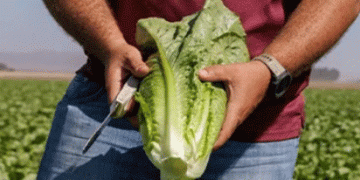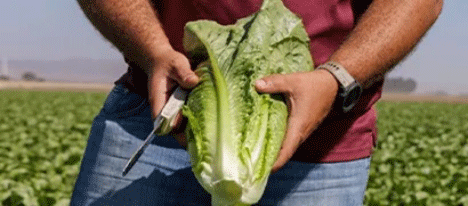On July 1st, the European Committee of the International Bremia Evaluation Board (IBEB-EU) announced the designation of a widespread new race of downy mildew in lettuce: Bl:41EU. This race, caused by the pathogen Bremia lactucae, has been detected across Europe and is expected to further spread throughout the summer and autumn.
Downy mildew is a severe disease affecting lettuce crops, leading to significant yield losses in both protected environments and open-field cultivation. The emergence of Bl:41EU underscores the need for robust disease management strategies. Rijk Zwaan, a leading company in the development of lettuce varieties, is at the forefront of providing solutions to combat this new threat.
Rijk Zwaan’s research and breeding station in the Netherlands has developed over 500 lettuce varieties tailored to various cultivation methods and environmental conditions. These varieties include ones with enhanced resistance to downy mildew, offering growers a crucial line of defense against Bl:41EU. The company’s crop specialists are actively advising farmers on the resistance profiles of these varieties and the best practices for managing the disease.
Sustainable solutions are central to Rijk Zwaan’s approach. Integrated pest and disease management (IPM) is emphasized to minimize the risk of outbreaks. While resistant varieties play a pivotal role, the company also advocates for the judicious use of appropriate plant protection products to prevent the development of new downy mildew variants. Good hygiene practices, such as removing diseased plants and promptly plowing under crop residues, are also recommended to reduce the spread of the pathogen.
The International Bremia Evaluation Board (IBEB) is a collaborative initiative involving lettuce breeding companies from the USA, France, and the Netherlands, along with the University of California-Davis, the Dutch Horticultural Inspection Service (Naktuinbouw), and the French National Seed Station (GEVES). The IBEB’s mission is to identify new races of Bremia lactucae that pose significant threats to lettuce production in North America or Europe and to promote the use of standardized race names in communications with growers.
The regional IBEB committees are responsible for identifying and nominating these races for their respective continents. The efforts of these committees ensure that farmers receive timely and accurate information about emerging threats and can adopt effective management strategies.
The identification of the new downy mildew race Bl:41EU presents a significant challenge for lettuce growers in Europe. Through the efforts of Rijk Zwaan and the International Bremia Evaluation Board, the industry is equipped with the knowledge and tools needed to combat this disease. Continued collaboration and adherence to integrated pest management practices will be crucial in mitigating the impact of Bl:41EU and ensuring the sustainability of lettuce production.































